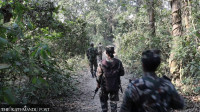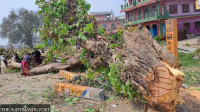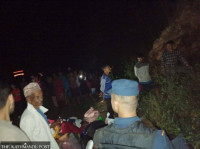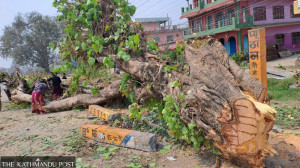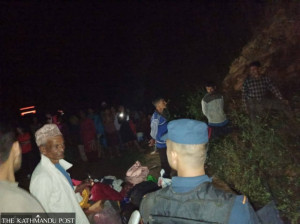Lumbini Province
Birds face food shortage amid shrinking wetlands
Encroachment of arable land near rivers and lakes for building infrastructure has harmed the bird population in these areas.
Manoj Paudel
The shrinking arable land near rivers and lakes, a natural habitat for birds, has led to a shortage of food for birds.
The Ruddy Shelduck (Tadorna ferruginea) locally known as Chakhewa, which inhabit the areas along the Rapti River in Bhalubang is facing a food shortage. Ornithologists also report a shortage of food for birds in Gaidahawa Lake, located in ward 4 of Gaidahawa Rural Municipality in Rupandehi. The Gadwall (Mareca strepera), locally known as Khadkhade Haans, in Barju Lake in Sunsari, is also suffering from the same problem.
Encroachment of arable land near rivers and lakes to build infrastructure has harmed the bird population living in these areas. Several hotels, restaurants, lodges, and picnic spots have been built in the areas surrounding lakes and rivers for tourism purposes.
According to ornithologists, birds do not find enough food even during the cash crop cultivation season. Outside the protected areas and parks, which are important habitats for birds in Nepal, several species of birds at Jagdishpur Bird Sanctuary in Kapilvastu, Barju Lake in Sunsari, Badhaiya Lake in Bardiya, and Gaidahawa Lake in Rupandehi are grappling with insufficient food.
Migratory birds use wetlands and lakes in Nepal to feed and nourish themselves. They eat rice, grains, insects, and worms in the fields outside and around the lake. But the shortage of food grains and growing concretisation of arable land has robbed the birds of their nourishment.
The shortage of food has led to a decline in the number of native birds and migratory birds around the wetlands, Dr Hemsagar Baral, senior ornithologist told the Post.
“Most of the birds go in search of food in the fields at night, and if they don't get enough food, they won’t come back next year. During the winter, migratory birds from countries including China, Mongolia, Kyrgyzstan, Turkmenistan, and Russia come here in search of food and escape the cold,” said Baral. “The availability of food only means a good habitat for birds."
According to Baral, the natural beauty of the wetlands, rivers, lakes and ponds has been affected after a decline in the number of birds visiting these areas.
“Aquatic birds such as Bar-headed Goose (Anser indicus) locally known as Khoyahans, Mallard (Anas platyrhynchos) locally known as Hariyo Tauke, Ruddy Shelduck, Common Pochard (Aythya ferina) locally known as Kailetauke hans, Cotton Pygmy-goose (Nettapus coromandelianus) locally known as Harihans, and Common Teal (Anas crecca) locally known as Bijul Gauri, among others, go in search of food in the fields. Similarly, birds such as Common Coot (Fulica atra) locally known as Marul, Purple Swamphen (Porphyrio porphyrio) locally known as Kurma, Common Moorhen (Gallinula chloropus) locally known as Bagale Simkukhura, and Pheasant-tailed Jacana (Hydrophasianus chirurgus) locally known as Jalapsara go in the field in search of food,” said Baral.
According to Chakra Timalsina, a nature guide from the Koshi area, the lives of several species of birds are being affected by unorganised development around the lakes and wetlands. Similarly, picnic spots have been opened around Jagdishpur, Barju Lake, Badhaiya Lake, and Gaidahawa Lake, without considering the effect on birds and other wild animals.
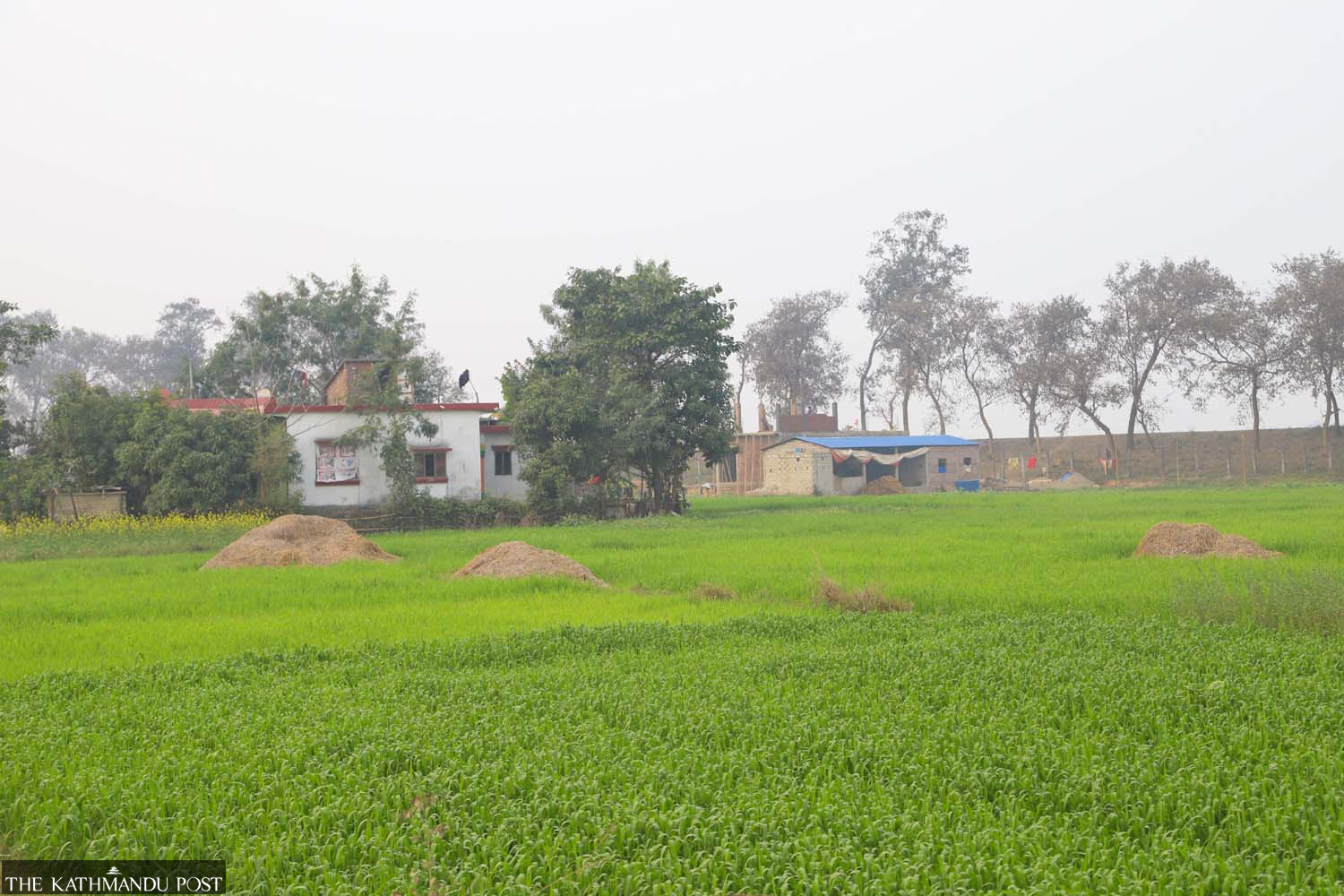
“As much as birds like insects and worms, their attraction towards crops and grains is also the same. Increased human activities have scared away both native and migratory birds from their habitats,” said Timalsina.
“Human activities carried out to promote tourism have created problems in bird conservation. Such activities disturb the natural habitats. The aquatic bird population is gradually decreasing in recent years. The number of water birds decreased in these four lakes this year,” said ornithologist Krishna Prasad Bhusal. According to him, the water birds have been in a decreasing trend in these lakes over the past four years.
The operation of boats in Jagadishpur Lake in Kapilvastu and Gaidahawa Lake in Rupandehi has also impacted the bird. Water birds feel unsafe due to the boat operation.
“The birds are frightened due to boats. Increasing human activities in the water bodies in Ramsar wetland sites. Jagadishpur Lake, a major habitat of water birds, is harmful to the birds,” said Tika Giri, another ornithologist. “It is very sad to witness the decreasing water bird population in Jagadishpur and other lakes having high potentialities of birding tourism. People will be discouraged from visiting Nepal with the decreasing bird species and number,” he added.
According to conservationists, the haphazard extraction of sand, stones and pebbles; shrinking forest cover and wetlands; chemical poisoning; habitat destruction; land fragmentation; climate change; and lack of awareness and hunting, among other things, are the main challenges to bird conservation in Nepal.
Shrinking paddy fields across the country is another challenge to bird conservation. The irrigated paddy field constitutes around 49 percent of the total wetland area in the country. Construction of houses and other structures in the paddy field, leaving the land fallow and planting other less water intensive crops instead of paddy add to the woes in bird conservation.
The number of bird species on the nationally threatened list has been surging with every bird count conducted over the past few years. Around 20 bird species have been enlisted as threatened species over the past 10 years. According to ornithologists, a bird count in 2011 conducted by various national and international organisations put a total of 149 bird species on the threatened list in Nepal. But the number of nationally threatened bird species has reached 170.




 16.18°C Kathmandu
16.18°C Kathmandu
